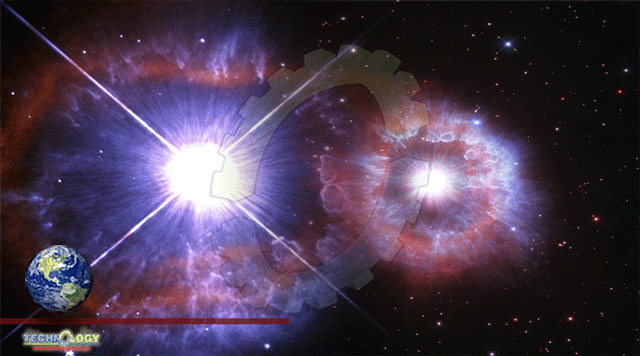In April 2021 Hubble released its 31st-anniversary image. It’s a portrait of AG Carinae, one of the most luminous stars in the entire Milky Way. AG Carinae is in a reckless struggle with itself, periodically ejecting matter until it reaches stability sometime in the future.

Thanks to the Hubble, we get to watch the brilliant struggle.
Now the people behind the Hubble have released another image, or rather images, of AG Carinae. It’s made up of Hubble observations of the star from 2020, 2014, and also as far back as 1994. AG Carinae is a luminous blue variable (LBV) and its appearance changes over time. The images bring those changes to life.
AG Carinae’s struggle is between the inward pressure of gravity and the outward pressure from fusion. When those two forces are out of balance, stars struggle. Stars always seek equilibrium.
The star is continuously losing mass at this late stage of its life. As the star runs out of fuel for fusion, its outward radiation pressure decreases. This means gravity can take the upper hand. Gravity draws some of the star’s mass inward toward the center of the star. As the matter moves inward, it heats up and is propelled explosively out into space. This will keep happening until AG Carinae loses enough mass to attain equilibrium.
In this case, the image on the left shows ionized hydrogen and nitrogen emissions. They’re part of the expanding emission nebula surrounding the star. The star is very hot, and high-energy ultraviolet photons from the star energize the hydrogen and nitrogen, causing them to emit light.
The image on the right shows dust in blue, lit up by reflected starlight. It’s a reflection nebula, a cloud of dust that’s reflecting the light from the star. So AG Carinae is like two nebulae in one: an emission nebula and a reflection nebula. Astronomers believe that powerful stellar winds are shaping the filaments and bubbles of dust and gas surrounding the star, giving them their diaphanous appearance. AG Carinae’s nebula is around five light-years wide.
AG Carinae is about 20,000 light-years away in the constellation Carinae. It’s difficult to see, both because of its distance and because it’s obscured by dust in visible light. As a variable star, its apparent brightness swings wildly, between 5.7 and 9, adding to the difficulty. It’s no problem for the Hubble though.
The nebula itself contains about 15 solar masses of material. Some of that was ejected from the star about 10,000 years ago. At that time, humanity was near the end of its paleolithic period and beginning its neolithic period. Humans were living in caves or simple structures and using basic tools made of stone and bone. In case you were wondering what your ancestors were up to at the time.
The nebula is about 0.4 to 1.2 parsecs from the star, and outside of that, there’s a massive cavity in the interstellar medium, about 8.8 parsecs wide. It was carved out long ago, by AG Carinae’s powerful stellar winds.
The gas in the nebula is travelling quickly, about 69 km (43 miles) per second. The stellar winds coming from the star are even faster. They’re moving at about 200 km (124 miles) per second.
AG Carinae has suffered multiple outbursts, most likely. Hydrogen and nitrogen make up most of the gas, seen in red, and there appear to be multiple rings, evidence of multiple outbursts. It’s possible that individual rings from individual outbursts have collided with one another. The blue dust is not in the shape of rings but is formed into clumps, filaments, and bubbles, probably by the stellar wind. AG Carinae’s stellar winds are extraordinarily powerful. Massive stars like it have winds that can be one billion times more powerful than our Sun’s stellar winds.
Originally published by Universe Today